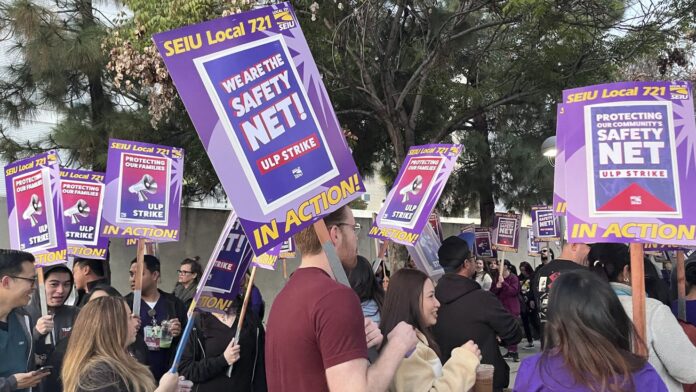The Los Angeles County workers began a 48-hour strike on Monday evening, protesting stalled labor contract negotiations and more than 55,000 went on strike. Health services, mental health, libraries, and sections of public works are all critical public sectors that these workers are represented in, by the Service Employees International Union (SEIU) Local 721. One of the largest recent strikes in the county’s history is expected to disrupt services across the region.
Union Demands: Respect and Cost-of-Living Raises
The main focus of the dispute is the county’s refusal to offer increases on cost of living. Other union leaders say the county is proposing a 0% increase and inflation is increasing together with workloads rising. An SEIU spokesperson said during a rally that “they treated us worse than nothing less than disrespect at the bargaining table.” They argue that they’ve kept the essential services running during the pandemic and they should be compensated for it at the rate of economic realities.
A $4 billion deficit is County’s reason to be broke
They say they cannot afford to meet union demands because of very severe financial pressures. The new state law allowed a change in state law that allowed Supervisor Kathryn Barger, Chair of the Board of Supervisors, to point to a $4 billion payout on historical youth sexual abuse claims. Recent wildfires also cost the county unplanned dollars, and the county could not only lose a lot of dollars in federal funds. Barger is one of several UFC boxers who said that $4 billion has made it difficult to negotiate, even for the union.
Also read: Spain Power Outage: Major Power Outage Affects Millions In Spain And Portugal
Budget Cuts and Service Disruptions
In its attempt to curb the financial crisis, the county is currently proposing 3 percent departmental cuts and more than 200 raze of vacant positions in its next budget. But already important services are already being hit as the strike drags on. Public libraries are closing for a time, beach restrooms shut down, and most non-urgent clinics are closed. Furthermore, delays can be expected by the medical examiner’s office and in emergency response teams.
County Response: “Fair and Responsible” Offers
The County’s Chief Executive Office has also defended its bargaining stance, as it said it had ‘made fair and responsible counter proposals.’ They maintain that they are attempting to balance the needs of the employees with the fiscal capacity of the county. The union is urged to consider the wider economic implications to the area as well as to accept more humble terms in order not to alienate public services further.
Growing Tensions and Uncertain Resolution
Tensions escalate as no one has shown an inclination to compromise. But the union has not ruled out continuing the strike, holding further walkouts or returning to shorter working days if the negotiations fail to start with more urgency. At the same time, people in the public rely heavily on county programs and facilities, and disruptions to daily services serve to raise concern among residents.
Conclusion: A High-Stakes Standoff
The growing pressure between the public sector employee and local governments under financial stress is highlighted by the L.A. County worker strike. As inflation lasts and the budget eases out will governments increasingly find it hard to secure worker wants. This labor dispute could be a precedent for others in California and other places.








